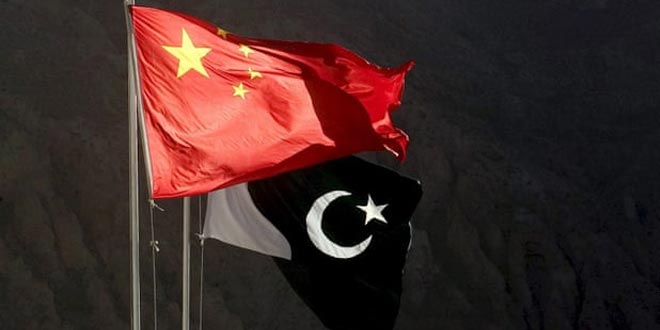The recent ‘abandoning’ of Pulwama master-mind Massod Azhar by China is being seen as a symptom of the friction emerging between Pakistan and China. However, this seems more like an effect of the differences that has already cropped up between the two countries.
The quantum of the chasm could be gauged from the fact that repeated requests from Pakistan to at least delay the ‘sanction’ for a week was not accepted by China. The May 1st sanction came immediately after the recent visit of Imran Khan to Beijing to attend 2nd Belt and Road Forum.

The Pakistani leadership was keen to avoid the perception that Imran Khan was forced to accept the condition during his visit to Beijing. However, Beijing intended to send a clear message of its unhappiness. As if to drive the point home, Imran Khan was welcomed by a Vice-Mayor rank official, probably the lowest rank welcome for any Pakistani head of government visiting China.
Pakistan had lodged its protests against China by not participating in the PLA Navy celebrations of 70 years, another first in the bilateral relations.
The frictions that started with Imran Khan ascending to power on anti-CPEC agenda have not reconciled. Imran Khan demanded a revaluation of CPEC, knowing well that China would have to concede amidst all the push-backs it’s getting on OBOR projects – from Malaysia, Philippines, to African and Latin American countries. Immediately after coming to power, he scraped Bhasa Dam and three other major power projects. China was again given a fait accompli when Imran Khan diverted about USD 175 million funds from CPEC to other projects, essentially to serve his constituency. China had to give a nod eventually to keep the facade.
However, these were still minor irritants and China could explain them away as ‘domestic political compulsions’. However, by bringing Saudi Arabia (which is considered a ‘backdoor’ for the US) into Gwadar without consulting China, Pakistan probably had given the biggest snub to its ocean-deep friend. This time Chinese had to send a message, and Masood Azhar was probably a good one. It reminded Pakistan of its vulnerability at international level. While China itself may not have many friends, Pakistan has none other than China.
China and Differences within Pak Army
It is for the first time that within Pakistan Army there has been a polarization between pro-US and pro-China camps. It is no secret that even during the worst of times for the US – Pakistan relations, Pentagon had maintained deeper interactions with Pak military. Military as an institution has its own robust culture, and given the fact that Pak military has roots in British military culture, it feels itself more aligned towards the Western/US military system than a communist modelled military of China. Professionally, the Pak military also feels itself superior to the Chinese PLA, which has not fought a war in many decades now.
However, the CPEC brought with itself economic incentives of unprecedented scale that were hard for the Pak Army to ignore. This created a new ‘loyal to China’ segment within the military, which was at cross-purposes with the pro-US lobby within. The differences have started to play out in the open now. What would have been unthinkable only a few years ago is becoming the new normal. Traditionally, Pak Army and its personnel have remained untouchables, irrespective of their misadventures. Not anymore. Due to the push and pull factors, one lobby is trying to control the direction at the cost of others, and for the first time the Generals are put under house arrests; while gag-orders have been issued against many retired generals who do not subscribe to the prevailing view of the dominant factor.
The premise of the problem seems to be the assumption on both the countries’ part that ‘the other side needs them more’; and in the process they are trying to extract maximum benefits from each other. As it is, China – Pak relations are probably one of the rare bilateral relations in history which has been surviving without having any foundation in shared values, cultures, and history. The relationship therefore has come to look more and more transactional. A relation with several fault-lines like the treatment of Uyghur Muslims in China, the cases of alluring Pakistani brides to China, and the security concerns for CPEC projects; is hard to sustain if there are no super-ordinate goals. Hence the differences keep searching for vents here and there.
That the relation has deeper issues than seen on the surface is also confirmed by the opacity being maintained by both the sides, as if both of them have to hide something. Other than the jargons that have become clichés, there has been no transparency about the content, extent, and nature of the relationship. This becomes much clearer when one contrasts this with similar other bilateral relations.
While the bilateral equations are strained because of the structural problems, an added component is the increasing economic vulnerability of both the countries at the same time. Pakistan’s financial problems are already in the open and are trying to get IMF bailout. However, the US would not let it get the lifebuoy without coming transparent on CPEC finances which are obviously going into to be discomforting for China. At the same time, China itself is facing headwinds on not only OBOR but also about its economy in general. With the trade frictions with the US intensifying, China would have less and less space to keep obliging its difficult junior friend. As the thing looks now, the year 2019 might in the year when the ‘iron-bond’ might start unravelling.
